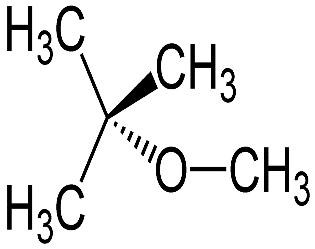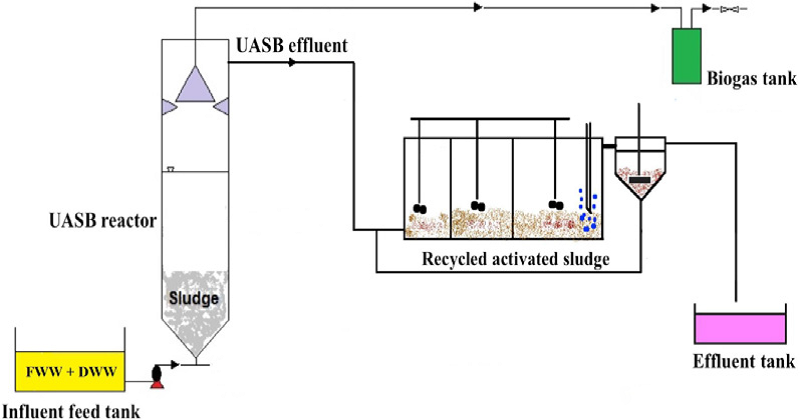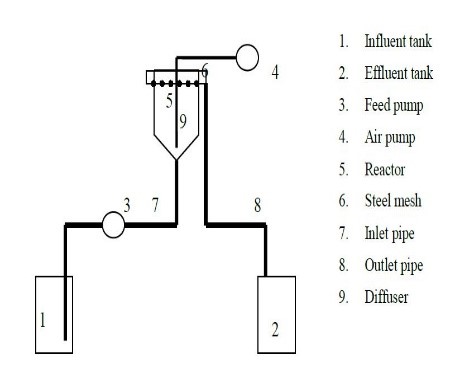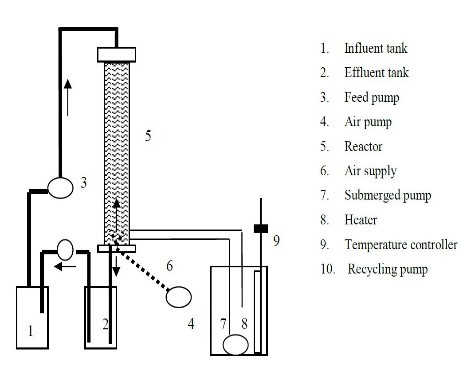
Combined (Bio)Remediation of Environment Contaminated with Mixed Wastes (BTEX/CAHs/MTBE)
 |
 |
 |
| TCE | BTEX | MTBE |
Chlorinated aliphatic hydrocarbons (e.g., TCE), monoaromatic hydrocarbons (e.g., BTEX), and MTBE are major soil and water pollutants as a result of their widespread anthropogenic use. Soil contamination is of particular concern as it results in offsite contamination of groundwater and surface waters by migration of contaminants through and with soil materials. Co-contamination of soil with the mixed pollutants allows for the application of bioremediation to achieve their simultaneous mineralization.
Achievements:
- Isolating indigenous microorganisms capable of degrading BTEX / CAHs / MTBE mixture.
- Construction of effective microbial consortium.
- Establishing optimal process parameters for mixture degradation through laboratory-scale batch/reactor experiments.
- Enhanced removal through microbial immobilization on waste material (e.g., scrap tire, silica gel).
- Determining how interaction (stimulatory or inhibitory) affects DCE and/or TCE co-metabolism and co-metabolizing microbial community structure in the presence of MTBE.
- Identifying microorganisms responsible for MTBE/chloroethenes co-metabolism using culture and biomolecular methods.
- Developing integrated remediation technology that can meet the regional regulation/standards to be set and strengthened in the near future.
Microbial Biodiesel(/Biogas) Production Simultaneously with Enhanced Wastewater Treatment (and from Food Waste)
 |
 |
| Biodiesel Production | Biogas Production |
For the purpose of environmentally sustainable development, the recovery of resource or energy from wastes has attracted worldwide attention these days. The wastewater generated from food industries is more difficult to treat than the domestic wastewater due to their high organic loads. For the microbial biodiesel production, the possibility of developing a pre-treatment process which could produce microbial lipid that could be converted to biodiesel by recovering nutrients from wastewater while simultaneously removing organic matters through cultivating oleaginous microorganisms was explored. For the microbial biogas production, the anaerobic co-digestion of a mixture of food waste and domestic wastewater (0.09, v/v) using an upflow anaerobic sludge blanket (UASB) reactor to generate renewable energy in form of biogas was investigated.
Achievements:
- Establishment of optimal process parameters for lipid productivity and removal of organics and nutrients from mixed (distillery and domestic) wastewater through laboratory-scale batch/reactor experiments.
- Estimating effects of yeast and microalgae on wastewater treatment and lipid production and optimizing mix ratio of yeast and microalgae.
- Exploring possibility to reuse (used) yeast seed culture medium with supplementary nutrients if necessary.
- Construction of effective oleaginous microbial consortium of yeast (Rhodosporidium toruloides) and autotrophic oleaginous microalgal strains.
- Anaerobic digestion of food waste using UASB reactor.
Wastewater Treatment – Bioremoval of Pharmaceutically Active Compounds (Emerging Micro-Pollutants)
 |
 |
 |
| WRF fixed-bed reactor |
Countercurrent seepage bioreactor | Rotating suspension cartridge reactor |
Phthalate esters (PAEs) are industrial chemicals widely used as plasticizers in industrial, domestic, and medical applications. PAEs belong to newly emerging contaminants and are considered as endocrine disrupting chemicals (EDCs) due to their adverse effects on human and aquatic organisms’ fertility. PAEs such as di(2-ethylhexyl) phthalate (DEHP) can be easily released into the environment because they are physically rather than chemically bonded to the plastic products matrices.
On the other hand, pharmaceutically active compounds (PhACs) such as carbamazepine and naproxen, classified as micropollutants, have been detected in many water bodies worldwide. PhACs are hardly biodegraded (removal efficiency <10%) through the conventional activated sludge process and the white-rot fungus (WRF) is reported to degrade them efficiently. The WRF reactors have been applied to remove PhACs from wastewater, with the varied performances. In addition, it is still hard to maintain a long-term stable reactor performance considering the bacterial contamination. Under these circumstances, the enhancement of the removal performances of PhACs through WRF reactor under non-sterile conditions during long-term operation was investigated.
Achievements:
- Enhanced removal of carbamazepine and naproxen from wastewater by immobilized white-rot fungus (WRF) Phaenerochaete chrysosporium through batch and reactor experiments under non-sterile condition.
- Enzyme (LiP and MnP) kinetics study to optimize conditions for better removal efficiencies.
- Enhanced removal of other micro-pollutants including ECDs (endocrine disrupters); PCPPs (pharmaceuticals and personal care products); Antibiotics and metabolites.
- Enhanced removal of DEHP from artificially contaminated water using indigenous bacterial isolate, Acinetobacter; Optimizing the DEHP biodegradation process, evaluating growth kinetics and biodegradation pathway for DEHP by the isolate and evaluating the effects of microelements on DEHP biodegradation.
REFERENCES (Since 2015 only), mainly related to biological remediation of contaminants/pollutants in water and subsurface (soil and groundwater) environments:
- Li, J., C. Wu, S-H. Chen, Q. Lu, H. Shim, X. Huang, C. Jia, and S. Wang. 2020. Enriching indigenous microbial consortia as a promising strategy for xenobiotics’ cleanup. Journal of Cleaner Production. In press (accepted). DOI: https://doi.org/10.1016/j.jclepro.2020.121234
- Lu, Q., X. Zou, J. Liu, Z. Liang, H. Shim, R. Qiu, and S. Wang. 2019. Inhibitory effects of heavy metal ions on reductive dechlorination of polychlorinated biphenyls and perchloroethene in distinct organohalide-respiring bacteria. Environment International. 135. 105373. https://doi.org/10.1016/j.envint.2019.105373
- Chan, P.C., Q. Lu, R.A. de Toledo, J-D. Gu, and H. Shim. 2019. Improved anaerobic co-digestion of food waste and domestic wastewater by copper supplementation – microbial community identification and effluent quality analysis. Science of the Total Environment. 670:337-344. DOI: 10.1016/j.scitotenv.2019.03.081
- Lu, Q., L. Qiu, L. Yu, S. Zhang, R.A. de Toledo, H. Shim, and S. Wang. 2019. Microbial transformation of chiral organohalides: Distribution, microorganisms and mechanisms. Journal of Hazardous Materials. 368:849-861.
- Zhou, Z., B. Liang, L-Y. Wang, J-F. Liu, B-Z. Mu, H. Shim, and J-D. Gu. 2019. Identify the core bacterial microbiome of hydrocarbon degradation and a shift of dominant methanogenesis pathways in the oil and aqueous phases of petroleum reservoirs of different temperatures from China. Biogeosciences. 16(21):4229-4241. https://doi.org/10.5194/bg-16-4229-2019
- De Toledo, R.A., U.H. Chao, T.T. Shen, Q. Lu, X. Li, and H. Shim. 2019. Reutilization of sewage sludge, waste scrap tires, and wood chips as sorbents to remove volatile organic compounds, plasticizer, and pharmaceutically active compound from contaminated environment. Environmental Science and Pollution Research. 26(12):11591-11604. DOI: 10.1007/s11356-018-2877-2
- De Toledo, R.A., X. Li, K.I. Wong, and H. Shim. September 2018. Biological removal of naproxen from non-sterile synthetic wastewater using Phanerochaete chrysosporium. In: Naproxen: Chemistry, Clinical Aspects and Effects. Nova Science Publishers, Inc. Chapter 4. pp.101-129.
- Chan, P.C., R.A. de Toledo, and H. Shim. 2018. Anaerobic co-digestion of food waste and domestic wastewater – Effect of intermittent feeding on short and long chain fatty acids accumulation. Renewable Energy. 124:129-135. DOI: 10.1016/j.renene.2017.07.029.
- De Toledo, R.A., J. Xu, U.H. Chao, and H. Shim. 2017. EFFECTS OF MANGANESE AND FERRIC IONS ON THE DEGRADATION OF DI-2-ETHYLHEXYL PHTHALATE (DEHP) BY ACINETOBACTER sp. SN13. In: Micropollutants: Sources, Ecotoxicological Effects and Control Strategies. Nova Science Publishers, Inc. Chapter 2. pp.45-68.
- Lu, Q., R.A. de Toledo, F. Xie, J. Li, and H. Shim. 2017. Reutilization of waste scrap tyre as the immobilization matrix for the enhanced bioremoval of a monoaromatic hydrocarbons, methyl tert-butyl ether, and chlorinated ethenes mixture from water. Science of the Total Environment. 583:88-96.
- Xu, J., Q. Lu, R.A. de Toledo, and H. Shim. 2017. Degradation of di-2-ethylhexyl phthalate (DEHP) by an indigenous isolate Acinetobacter sp. International Biodeterioration & Biodegradation. 117:205-214.
- Li, J., R.A. de Toledo, and H. Shim. 2017. Multivariate optimization for the simultaneous bioremoval of BTEX and chlorinated aliphatic hydrocarbons by Pseudomonas plecoglossicida. Journal of Hazardous Materials. 321:238-246. DOI: 10.1016/j.jhazmat.2016.09.020
- Ling, J., Y. Tian, R.A. de Toledo, and H. Shim. 2017. Cost reduction for the lipid production from distillery and domestic mixed wastewater by Rhodosporidium toruloides via the reutilization of spent seed culture medium. Energy. 136:135-141. DOI: 10.1016/j.energy.2016.04.008
- Ling, J., R.A. de Toledo, and H. Shim. 2016. Biodiesel production from wastewater using oleaginous yeast and microalga. In Environmental Materials and Waste – Resource Recovery and Pollution Prevention [EMW – RR and PP]. M.N.V. Prasad and K. Shih (eds). Publisher Elsevier USA. Ch. 8. pp.180-213.
- Li, X., J. Xu, R.A. de Toledo, and H. Shim. 2016. Enhanced carbamazepine removal by immobilized Phanerochaete chrysosporium in a novel rotating suspension cartridge reactor under non-sterile condition. International Biodeterioration & Biodegradation. 115:102-109. DOI: 10.1016/j.ibiod.2016.08.003
- Xie, F., Q. Lu, R.A. de Toledo, and H. Shim. 2016. Enhanced simultaneous removal of MTBE and TCE mixture by Paracoccus sp. immobilized on waste silica gel. International Biodeterioration & Biodegradation. 114:222-227. DOI: 10.1016/j.ibiod.2016.07.003
- Kwon, K., H. Shim, W. Bae, J. Oh, and J. Bae. 2016. Simultaneous Biodegradation of Carbon Tetrachloride and Trichloroethylene in a Coupled Anaerobic/Aerobic Biobarrier. Journal of Hazardous Materials. 313:60-67.
- Lu, Q., R.A. de Toledo, and H. Shim. 2016. Effect of COD/TP ratio on biological nutrient removal between A2O and SBR process coupled with microfiltration and effluent reuse potential. Environmental Technology. 37(12):1461-1466.
- Ling, J., S. Nip, R.A. de Toledo, Y. Tian, and H. Shim. 2016. Evaluation of specific lipid production and nutrients removal from wastewater by Rhodosporidium toruloides and biodiesel production from wet biomass via microwave irradiation. Energy. 108:185-194. DOI: 10.1016/j.energy.2015.05.141
- Li, X., J. Xu, R.A. de Toledo, and H. Shim. 2015. Enhanced removal of naproxen and carbamazepine from wastewater through a novel countercurrent seepage bioreactor immobilized with Phaenerochaete chrysosporium under non-sterile conditions. Bioresource Technology. 197:465-474.
